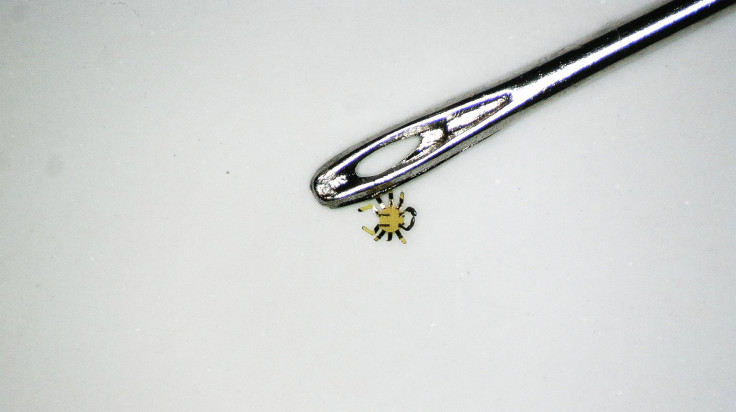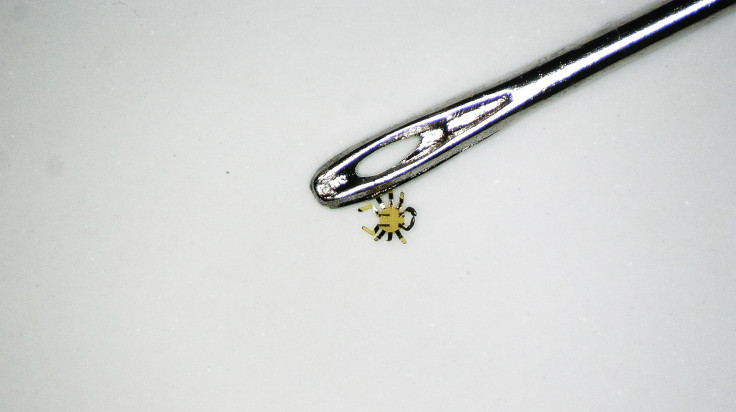Tiny Remote-Controlled 'Crab' Robot Is Smaller Than A Flea [Watch]

A team of researchers has developed the "smallest ever" remote-controlled walking robot. The tiny "crab" robot is smaller than a flea and may be used for various tasks in small spaces in the future.
Engineers described the rather adorable little robots they developed in their paper published in the journal Science Robotics Wednesday. The micro-sized robot is not only impressively small at just about half a millimeter wide but also quite mobile.
"Modes of locomotion and manipulation span from bending, twisting and expansion upon global heating to linear/curvilinear crawling, walking, turning and jumping," the researchers wrote.
One can see just how mobile and even how small these peekytoe crab-inspired robots are in the video shared by Northwestern University.
The tiny robots aren't powered by "complex hardware," Northwestern University noted in a news release. Instead, the researchers used a shape-memory alloy that returns to its remembered shape when it's heated, thereby creating its movement as it transforms from one state to another. A scanned laser beam acts as a remote control for the robots by heating it at targeted locations. It not only activates the robots but also determines the direction of their movement.
"Because these structures are so tiny, the rate of cooling is very fast," John A. Rogers of Northwestern University, who led the experimental work, explained in the news release. "In fact, reducing the sizes of these robots allows them to run faster."
Interestingly, the researchers made the robots using a method they devised years ago, which was actually inspired by children's pop-up books, according to the university. And these robots aren't just for the sake of novelty because such micro-robots may actually have some important practical uses in the future.
"Robotics is an exciting field of research, and the development of microscale robots is a fun topic for academic exploration," Rogers said. "You might imagine micro-robots as agents to repair or assemble small structures or machines in industry or as surgical assistants to clear clogged arteries, to stop internal bleeding or to eliminate cancerous tumors — all in minimally invasive procedures."
As the researchers noted, such advances in "materials, manufacturing, actuation and sensing" add to the knowledge in the emerging field.
Only recently, a California startup announced its plans for the first clinical trials for its tiny injectable robots. These microrobots can be guided in the brain using magnets, bringing what was once the stuff of science fiction into reality.

Photo: Northwestern University






